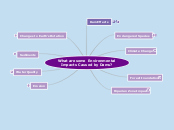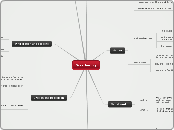What are some Environmental Impacts Caused by Dams?
Erosion
Waves, wind, and mass wasting.
Not only is there mass erosion happening with the reservoirs, but when the natural sediments in a free-flowing river are taken away the remaining river bed on the other side of the dam starts to manufacture it's own sediment taking cobbles, sands, soil and gravels away from the existing shoreline. This can cause riparian zone destruction and a change in how the river meanders. This is just one small fact of what will happen to the natural watershed when a dam is in place.
Erosion in the drawdown zone
When I was Staff Archaeologist with the Nez Perce Tribe Cultural Resource Program, I was part of the drawdown zone survey crew. We surveyed the Upper North Fork of the Clearwater River now located in Dworshak Reservoir. In 2001 I finished writing my 200 page report about the drawdown zone impacts. I talked about the erosion that has taken place due to the drawdown of the reservoir causing the destruction of 250 archaeological sites and 150 isolated sites. We mapped what was left of each site during the survey.
Another form of erosion that takes place in the upper drawdown zone during the winter months are the ice sheets. Huge sheets of ice have been seen on the upper banks. Gravity causes them to slowly move down the slopes, taking soil and artifacts with them.
Dworshak Dam was constructed for flood control and to produce a very small amount of electricity. Due to continual environmental impacts caused by the dam, I feel this dam should be breached.
One final note: Historically, one of the oldest Nez Perce fishing grounds is now located near Dworshak Dam under 700 feet of water and sediment. The North Fork of the Clearwater River needs to be a naturally free-flowing river again.
Dworshak Dam and Reservoir, Orofino, ID
Dworshak was completed in 1973. It is a straight axis gravity dam at 717 ft. in height with a crest length of 3,287 ft. The total cost to build the dam was $312 million.
Interesting Facts: Dworshak is the tallest straight axis gravity dam in the Western Hemisphere and is the third highest dam in the United States. It is the 22nd highest dam in the World. There is twice as much concrete in Dworshak Dam as in Cheope’s Great Pyramid in El Giza, Egypt.
Water Quality
Temperature
Dams and Water Quality
(An excerpt from Silenced Rivers: The Ecology and Politics of Large Dams, by Patrick McCully)
Water released from deep in a reservoir behind a high dam is usually cooler in summer and warmer in winter than river water, while water from outlets near the top of a reservoir will tend to be warmer than river water all year round. Warming or cooling the natural river affects the amount of dissolved oxygen and suspended solids it contains and influences the chemical reactions which take place in it. Altering natural seasonal changes in temperature can also disrupt the lifecycles of aquatic creatures — breeding, hatching and the metamorphosing of larvae, for example, often depend on thermal cues.
Relatively warm winter releases from reservoirs in cold climates will inhibit the formation of ice downstream. Reduced ice cover makes hazardous or impossible the use of frozen rivers as winter roads: in northern Scandinavia, for example, dams mean that the Sami people can no longer use many of their traditional winter reindeer herding routes which follow frozen rivers. Cold winter air passing over the relative warmth of some of the huge Russian and Canadian reservoirs can cause long spells of freezing fog.
In the same way as reservoirs trap river sediment, they also trap most of the nutrients carried by the river. Massive algal blooms in the shallow, stagnant reservoirs of the ex-USSR have rendered their water unfit for either household or industrial use.
The presence of an adequate level of dissolved oxygen in a river is one of the main indicators of good water quality. Water poor in dissolved oxygen can 'suffocate' aquatic organisms and make water unfit to drink. Dissolved oxygen, furthermore, is vital to enable bacteria to break down organic detritus and pollution.
Bacteria, algae blooms, and disease
Sediments
Dammed rivers and the natural transport of sediment
"Dammed rivers also lack the natural transport of sediment crucial to maintaining healthy organic riparian channels. Rocks, wood, sand and other natural materials build up at the mouth of the reservoir instead of dispersing through the river’s meandering channel. “Downstream of a dam, the river is starved of its structural materials and cannot provide habitat,” reports HRC "(Scientific America, 2012)
Sedimentation buildup in dams
Changes to Earth's Rotation
World's largest dam
The Three Gorges Dam is the world's largest dam located on the Yangtze River in China.
Water weight
NASA Reports that the weight of the water (39 trillion kilograms or 42 billions tons) in the Three Gorges Dam in China will affect Earth's rotation.
Three Gorges Dam, Yangtze River, China
Riparian Zone Impact
Dams and other impacts: Montana Riparian Zone
What is a riparian zone?
Forest Inundation
North Fork of the Clearwater River and forest before dam construction
I don't remember the exact amount of trees that were removed from the banks of the North Fork of the Clearwater River before the valley was allowed to fill with water when Dworshak Dam was complete. It was an enormous amount of timber. During the biggest drawdowns, up to 150 feet, I have seen the remains of the giant redwoods that were cut down. They were huge. An ancient forest was removed so the dam could be constructed. Dams like this are being built in places like Brazil, inundating rain forests and destroying wildlife habitats, changing climates, and destroying cultures.
How dam construction effects forests and people
Climate Change
Methane gases and dams
Endangered Species
Fish are impacted immensely by dams due to changes involving their migration, temperature, and habitat to name a few. However, all wildlife is impacted by dam construction. Habitats change or are taken away endangering lives and possibly causing species extinctions.
Fish and other species
Fish migration, dams and ladders
The dams are the biggest problem involving fish migration in the Pacific Northwest. Some dams have built fish ladders to help the salmon return to their homes to breed and lay eggs. The majority of these ladders do not allow enough fish to return. So many are killed by the turbines and the young fish are killed when water is being dumped. The only way for the salmon to survive would be to breach the dams. Some of the smaller dams have been removed, and there has been talk of more, however, there is no talk of breaching any of the larger dams that provide electricity on the Snake and Columbia rivers.
River migration
Dam Effects
This interactive site shows how a healthy free-flowing river looks. It also illustrates how a well-run and poorly run hydroelectric ecosystem should look. You can also remove the dam. Personally, I do not believe there is ever a well-run dam. There will always be an environmental impact no matter what. The construction of the dam already impacted the ecosystem before it was even put in place. The geologic, historical, environmental, biological, and cultural impacts can never be replaced once the dam is in place.
Friends of the Clearwater
DamNation - You be the judge.
Lower Snake River Dams
I am a member of the Friends of the Clearwater (FOC). This non-profit organization's main focus is to keep wilderness areas located in the Pacific Northwest, wild and free. FOC wants there to be wild and scenic areas available for generations to come. Politics and land management issues have crossed the lines. Environmental impacts are just part of problems with dams. They are also in violation of treaty obligations with many different Tribal Nations located in the Pacific Northwest. The four Lower Snake River dams that need to be breached include Ice Harbor, Little Goose, Lower Monumental, and Lower Granite.
Removal of Elwha and Glines Dams
In 2007, Marmot Dam was removed, located on the Sandy River, WA. In 2011, both the Elwha and Glines Canyon dams were removed, located on the Elwha River, Olympic National Park, WA. Between 2011 and 2012, the Condit Dam was removed, located on the White Salmon River, WA. River restoration is now taking place. The salmon are free to return to their ancestral breeding grounds. The riparian zones will also be restored and wildlife and fish habitats will eventually return. It is my opinion that river ecosystems work better as a free-flowing system.









